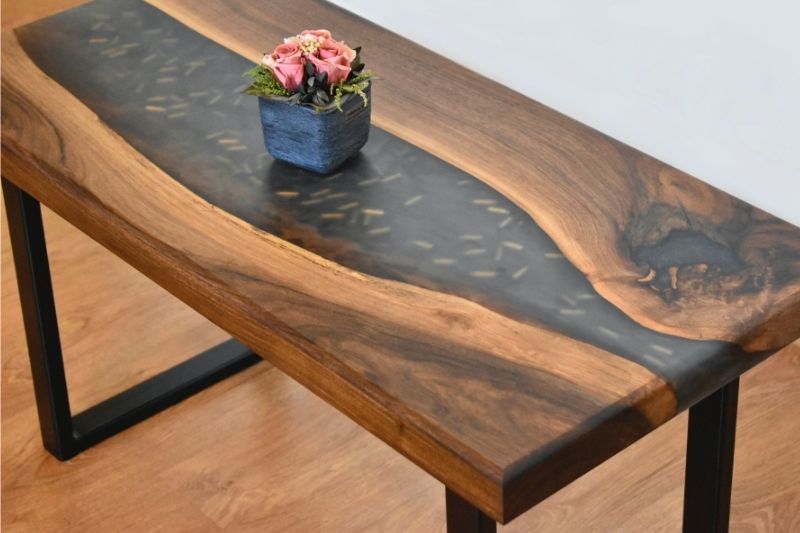No products in the cart.
The Difference Between Epoxy and Epoxy Resin?

If you love doing DIY or woodworking projects, then you’ve probably heard of epoxy. You know of its uses and how amazing your final projects end up looking thanks to this product. However, not too many people know the difference between epoxy resin and epoxy. It can also get quite confusing, especially because epoxy is a resin. And there are three types of resin, casting resin, epoxy resin, and polyester resin.
Since we are discussing home projects, we will have to look at the difference between epoxy resin and casting resin. And with the help of Squid Cast Epoxy Casting Resin, here are some differences you can use to spot epoxy resin from casting resin.
1. Intended Use
The first and most apparent difference between epoxy resin and epoxy is their intended use. Epoxy resin is meant for woodwork. It’s excellent for creating coatings on wood projects that are weather-resistant and durable. Its coating application also helps to fill in wood whenever there are structural weaknesses or rot. You can also use epoxy resin to bond two surfaces together. Casting resin is used for casting applications like figurines, molds, and jewelry.
However, it’s worth noting that you can sometimes substitute one resin for the other despite their different uses, depending on the nature of your application.
2. The Thickness
Epoxy resin is much thicker compared to a casting resin. The thin viscous nature of a casting resin can make it quite hard to use as a coating because it tends to run off the sides. So, if you ever want to use a casting resin to coat any project, you might have to build a mold or a frame to ensure it doesn’t run off the sides as it cures.
3. Cure Times
Epoxy resin has a higher cure time compared to casting resins. Epoxy resin often begins to gel as quickly as 20 minutes, while casting resin can take at least 18 hours to gel. This is because casting resin has a thicker pour, and it dissipates heat much slower than epoxy resin, also referred to as coating epoxy.
Leaving epoxy resin in a container beyond ten minutes can cause it to produce too much heat. It can also ruin your project, as the heat can cause the bond to weaken and crack. And, this damages the appearance of any wood project.
4. Working Time
It’s important to note that the working and cure time of resins are two different terminologies. The working time, pot time, or gel time refers to the amount of time the resin takes before setting up. Once the resin goes past that time, it gets hard to remove bubbles from the resin layer.
Since a casting resin takes much time to cure, it will also have a longer working time. An epoxy resin’s working time will be 15 minutes to 25 minutes. The short working time means that you’ll have to constantly keep an eye on your epoxy resin or risk starting again. On the other hand, the long working time casting resins have, gives you more time to make final touches or adjustments to your projects.
5. Maximum Pour Depth
The maximum pour depth for coating epoxy is no more than 1/8 to 1/4 inch for every application. If you happen to pour your epoxy resin deeper than that, there might be an exothermic reaction that could cause it to crack. On the other hand, casting resin can be poured into depths of many inches, as they are less exothermic. This is one reason why casting resins are pretty famous for jewelry and mold projects, as it’s possible to achieve a deep layer of encapsulation.
6. Hardness
Epoxy resins are often harder than casting resins. But, you can also mix casting resins in different ways to achieve the degree of hardness you require depending on the project. For instance, if your project requires flexibility, your mix of casting resin shouldn’t be too hard. This will help the resin contract and expand quickly.
7. Finished Product
The finished product for casting resins, in terms of quality, is a clear glass-like finish. The finish for epoxy resin is never that clear. This means that the end product for a casting resin is perfectly translucent and transparent.
When discussing the differences between epoxy and epoxy resin, it’s important to remember that epoxy is a resin. Hence the comparison between casting resin and epoxy resin.
















Leave a Reply